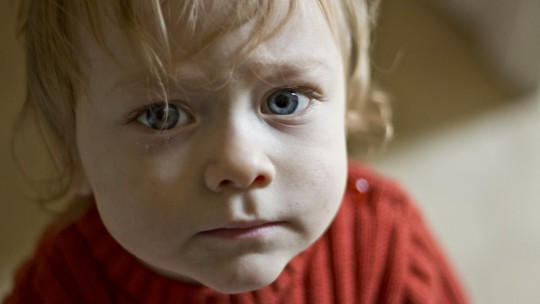Each and every one of us has our own way of seeing the world, perceiving it and interacting with it. We think, relate, express ourselves, speak or even move in different ways. This is because our being and identity arise mainly from the interaction between our biology and our experiences and learning.
Now, we do not stop being members of the same species, in such a way that on a biological level we are subject to and share a genome and the same basic structure, having a growth process that is very similar in the majority of people. Among the multiple systems that arise from this development is our brain.
However, sometimes alterations or problems may occur during said development, capable of altering aspects such as the ability to make or inhibit our own movements. An example of this is found in stereotyped movement disorder a neurodevelopmental problem that we are going to talk about next.
Stereotyped movement disorder
It is known as stereotyped movement disorder. one of the motor disorders of neurological development or neurodevelopment which is characterized by the habitual presence of repetitive, aimless and apparently guided motor behaviors and behaviors that arise in the first phases of development and that cause interference in the life of the minor who suffers from it, in a period that It must comprise at least four weeks.
Common movements include nodding, shaking hands and arms, or rocking, but it is also possible that the stereotypy in question is an act of self-harm such as hitting oneself or head-butting. It is because of that some stereotypes can be dangerous and lead to injuries , which could even lead to incapacitation or death. In this sense, when making the diagnosis, it must be specified whether it occurs with or without self-harm, and if protective measures are required to prevent injuries.
As we have seen, stereotyped movement disorder is one of the neurodevelopmental disorders, which are characterized by having their origin in a different nervous development than usual or by the presence of problems, slowdowns or alterations in the maturation of the nervous system. during growth.
These problems begin in childhood (in the case in question it usually appears before three years of age), and can cause limitations or difficulties in the functionality or adaptation of the subject in comparison with their peers. It is common for movements to persist during childhood and reach their maximum peak in adolescence. It can also affect socialization and learning, making it difficult or generating social rejection.
Symptoms: stereotypies
These movements are called stereotypies, and They are known as a type of hyperkinetic movement or due to excess of this These are partially involuntary movements that appear in a coordinated and generally rhythmic manner. This semi-involuntary nature implies that although they are not carried out with a specific purpose at a conscious level but rather arise spontaneously and uncontrolled, they can be stopped voluntarily.
They generally appear impulsively and although it can make it difficult to follow actions, it does not prevent complex movements from being carried out. Their purpose is not clear, although it is suggested that they may aim to manage and regulate the child’s internal tension. Likewise, they only occur during wakefulness and in most cases distraction or the initiation of an activity can stop the movements from being carried out.
Differential diagnosis
It is important to keep in mind that the diagnosis of stereotyped movement disorder cannot be made if there is another neurodevelopmental disorder that explains these behaviors, or a diagnosed intoxication or neurological disease.
In this sense, it should be noted that it is common for stereotypes to appear in people with intellectual disabilities or autism, in children with psychotic problems or in some cases of childhood obsessive-compulsive disorder, although in these cases the diagnosis of stereotyped movement disorder would not be considered.
It must also be taken into account that this disorder is different from complex motor tics, with which it can be confused but in which the movements are less rhythmic and more involuntary and uncontrollable. Another problem that can be confused with is trichotillomania, in which the affected person compulsively pulls out their hair. as a method of anxiety management
Theories about its causes
Even today, the mechanisms that cause this disorder are not completely understood. Now, as a neurodevelopmental disorder, its presence is due to a problem derived from the process of maturation and development of the child’s brain There are different theories regarding how it happens.
One of them establishes a possible alteration at the level of neurotransmitters, with a possible excess of dopamine and other catecholamines. At the brain level there may also be some type of degeneration or alteration in temporal areas.
On a psychological level, there is also talk of a possible unconscious purpose of these movements, being the result of an attempt to discharge energy caused by tension. Sometimes some theories have linked the existence of excessive demands from the environment or in the search for pleasure and reduction of pain by provoking through self-harm the use of substances that temporarily inhibit pain (something that in nature means that we may not feel pain in all its intensity until we can get to safety).
Likewise, it has been observed that they seem more frequent in environments in which there has been poor stimulation of the minor on a physical or social level or, on the contrary, overstimulation that makes them seek balance through movement. It is more common in people with sensory disabilities or institutionalized
Treatment
Stereotypic movement disorder can be treated with a multidisciplinary approach, so that stereotypies can be reduced and the possible impact on the functionality and participation in society of the affected subjects can be reduced. The treatment used in each case will depend on the specific symptoms, the age and moment of development and the possible causes.
In some cases the stereotypes they may end up disappearing as the child grows, although in other cases they remain for life. In any case, beyond the possible difficulty that stereotypies may pose, they are not dangerous (unless they are self-harming) and in many cases treatment is not achieved.
Fundamentally, cognitive behavioral psychological therapy is used. Some strategies used may be differential reinforcement of other behaviors and habit reversal Work can be done to try to reduce the self-stimulatory potential of stereotypy by trying to get the patient to stimulate himself in another way. In cases of understimulated patients, it will be advisable to bring the subject closer to an environment with a higher level of stimulation, while in some patients with excess stimulation, it could be beneficial to reduce it.
In the case of patients with self-harming movements, it will also be necessary to modify the environment in such a way that injuries are prevented and the integrity of the affected person can be protected. This type of alteration can be a great cause of distress for parents and those around them, so they will benefit from psychoeducation and contact with families with children who suffer from the same problem.
Sometimes drugs may also be used , usually benzodiazepines and other drugs that lower the level of physiological activation. Antidepressants are also often used.
Finally, at an educational level, the possibility that some learning may be more complex will have to be taken into account, and adjustments must be made to allow for good development.









